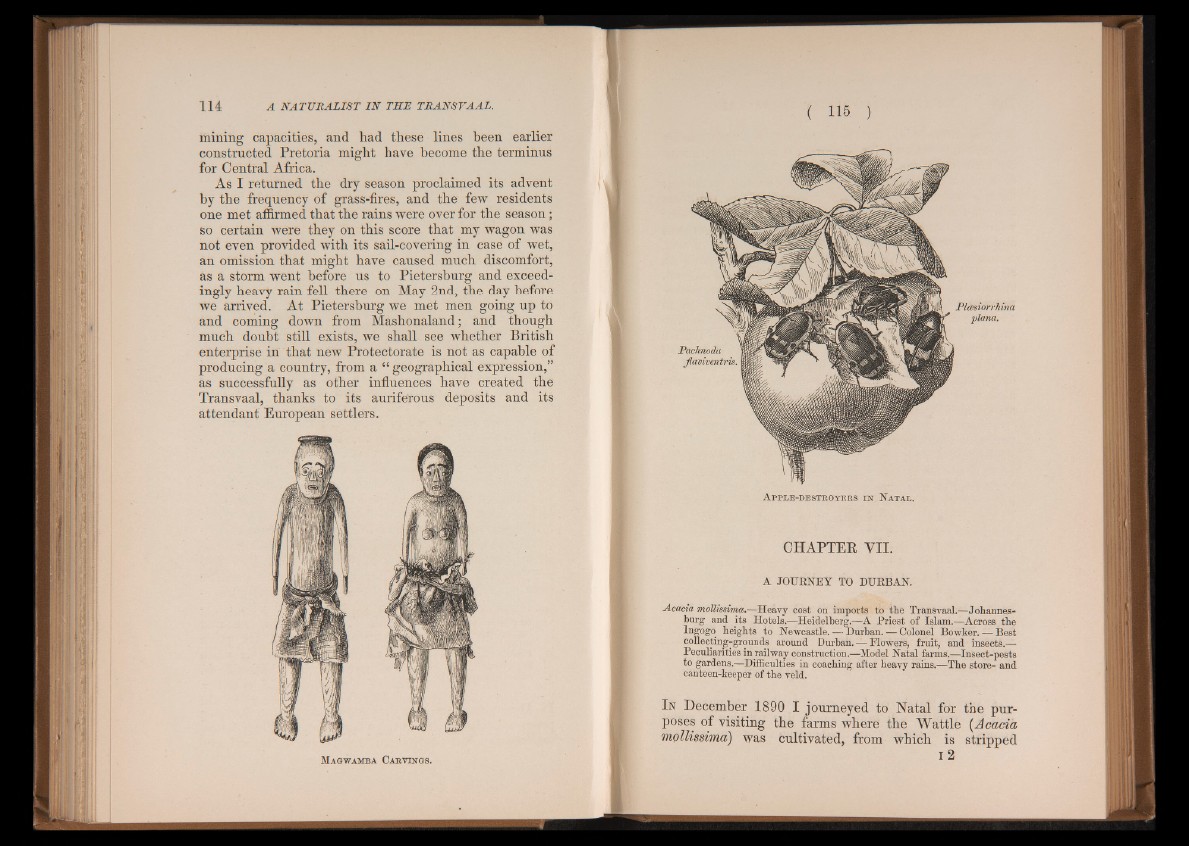
mining capacities, and had these lines been earlier
constructed Pretoria might have become the terminus
for Central Africa.
As I returned the dry season proclaimed its advent
by the frequency of grass-fires, and the few residents
one met affirmed that the rains were over for the season;
so certain were they on this score that my wagon was
not even provided with its sail-covering in case of wet,
an omission that might have caused much discomfort,
as a storm went before us to Pietersburg and exceedingly
heavy rain fell there on May 2nd, the day before
we arrived. At Pietersburg we met men going up to
and coming down from Mashonaland; and though
much doubt still exists, we shall see whether British
enterprise in that new Protectorate is not as capable of
producing a country, from a “ geographical expression,”
as successfully as other influences have created the
Transvaal, thanks to its auriferous deposits and its
attendant European settlers.
Magwamba Carvings.
Paehnoda
flaviventris.
Plcesiorrhina
plana.
A p p l e -destroyers in Na ta l .
CHAPTER VII.
A JOURNEY TO DURBAN.
Acacia mollissima.—Heavy cost on imports to the Transvaal.—Johannesburg
and its Hotels.'—Heidelberg.—A Priest of Islam.—Across the
lngogo heights to Newcastle. — Durban. — Colonel Bowker. — Best
collecting-grounds around Durban.-SFlowers, fruit, and insects.—
Peculiarities in railway construction.—Model Natal farms.—Insect-pests
to gardens.—Difficulties in coaching after heavy rains.—The store- and
canteen-keeper of the veld.
In December 1890 I journeyed to Natal for the purposes
of visiting the farms where the Wattle (.Acacia
mollissima) was cultivated, from which is stripped
I 2